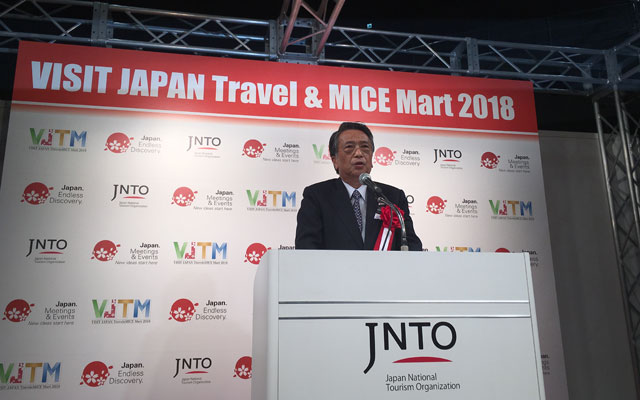An unprecedented number of natural disasters this summer has dealt a severe blow to Japan’s tourism, but the trade is confident that it will soon bounce back.
Osaka was struck by a 6.1 magnitude earthquake on June 18. The western part of the country experienced torrential rainfall over July 6-8 and, on September 4, Osaka saw the arrival of Jebi, the strongest typhoon to hit Japan’s mainland in 25 years. A few days later, Hokkaido was hit by a 6.6 magnitude earthquake.

Speaking at the recent Visit Japan Travel & MICE Mart (VJTM) in Tokyo, Satoshi Seino, president of Japan National Tourism Organization, said the disasters have resulted in “a strong sense of crisis” as inbound numbers fall, particularly from South Korea.
In the first six months of 2018, Japan and South Korea reported 18 per cent growth in visitors from their respective countries. In July and August, Japan experienced a decline of 5.6 per cent and 4.3 per cent respectively.
At VTJM, Japan and South Korea signed a pact to work together to expedite the return of South Korean travellers to areas affected by the disasters.
For Maiko Kobayashi of tour group Made in Hokkaido, the South Korean market is of concern. Almost all of its South Korea clients have cancelled their summer and autumn trips to Japan.
Most clients in Thailand and Malaysia, however, have postponed their travel date, thanks to Made in Hokkaido’s regular updates to overseas agents on the status in affected areas, Kobayashi told TTG Asia.
She is confident that the Philippines market will bounce back with the launch of the Manilla-Chitose (Hokkaido) flight on October 8, postponed from September 10 because of the earthquake.
According to Lo King Yin of Hanatour Japan’s international business department, 200 of its customers from the Philippines and Malaysia cancelled their September and October trips to Osaka within days of Jebi’s arrival.
She is working with her foreign counterparts to rearrange their flights to Tokyo, from where they will tour the Hokuriku region instead.
Meanwhile, Valentin Chao of HIS’ inbound travel sales division reports a small decrease in sales to the Kansai region but said Kyoto and Osaka will always be popular destinations. In the long term, he anticipates no damage to these markets.




















